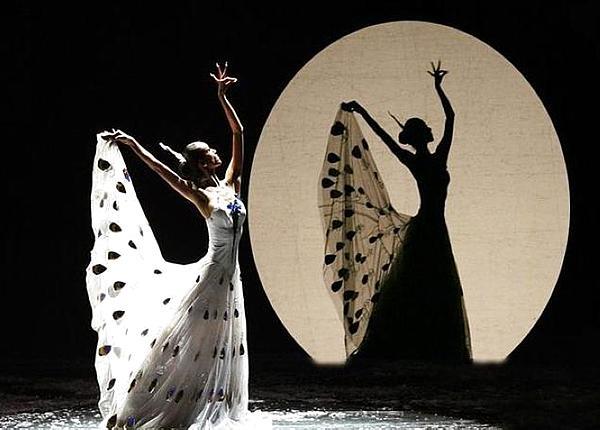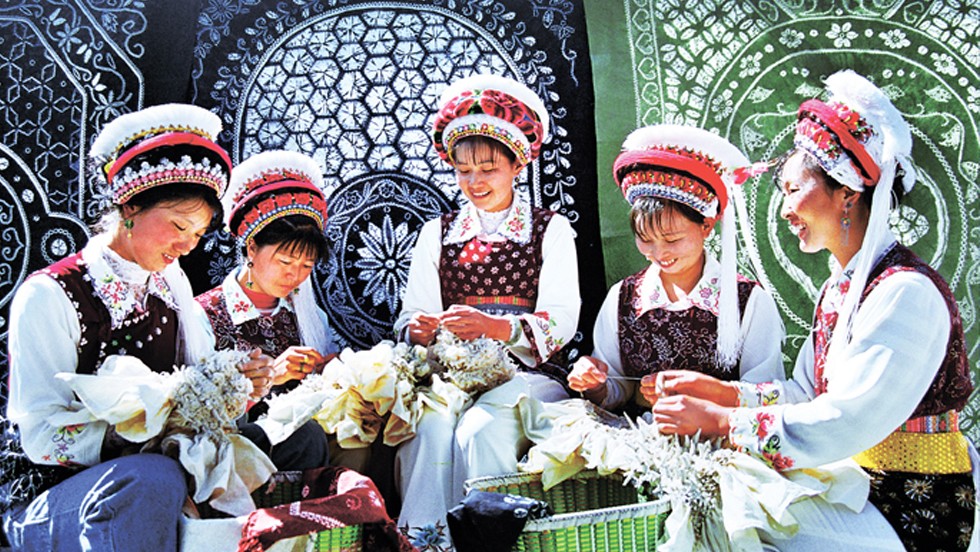Before returning to China, I completed a questionnaire (about the traditional culture of Chinese ethnic minorities and the Chinese fashion market). China is a country with 56 ethnic minorities, so I asked the question “Do you know about the traditional culture of your local ethnic group?” But among the 84 respondents, nearly one-third said they did not know about the traditional culture of the ethnic groups in their province. After receiving such a result, I was particularly sad – sad that the traditional culture of Chinese ethnic minorities could be forgotten at any time.
I grew up in Yunnan Province, China, and my province has the most ethnic minorities in China (including the Han ethnic group, there are a total of 26 ethnic minorities, of which 15 are unique to Yunnan). So I decided to set this survey in my hometown.
In this trip back to China, I decided to visit the two cities of Xishuangbanna in Yunnan (the ethnic minority is the Dai) and Dali in Yunnan (the ethnic minority is the Bai). Before the trip, I need to deepen my understanding of the city and the ethnic minorities in the city.
Xishuangbanna:
The full name of Xishuangbanna is Xishuangbanna Dai Autonomous Prefecture, located in the southwest of Yunnan Province. The area has a tropical climate and is also the most intact tropical ecosystem in China. Xishuangbanna borders Myanmar and Laos. Stilt-style bamboo buildings are the characteristics of Dai residence. (云南年鉴2023, 2023)
Xishuangbanna Dai Costumes:
Dai boys in Xishuangbanna mostly wear collarless, double-breasted or large-breasted short-sleeved shirts, long trousers, and white or blue cloth wrapped around their heads. Tattoos are very common among Dai men. Boys usually ask for tattoos when they are about 11 years old. Tattoos represent bravery in Dai customs. Xishuangbanna Dai girls usually wear white or scarlet underwear, with a thin waist, wide hem, and various colored tube skirts. (National Ethnic)
Xishuangbanna Dai Peacock Dance:

There are many kinds of Dai dances, and the Dai people in Xishuangbanna usually call dance “fan”. This kind of folk dance is mainly characterized by imitating animal movements, including peacock dance, heron dance, turtledove dance, etc. This time I will focus on the Dai peacock dance as the main direction of research.
It is said that more than a thousand years ago, the Dai leader Zhao Masu imitated the graceful posture of the peacock and learned to dance. Later, it was processed and formed by generations of folk artists and passed down to form the peacock dance. In the minds of the Dai people, the peacock is a symbol of happiness and auspiciousness, and the peacock is also a god-like existence in the Dai culture. The Dai peacock dance has strict procedures and requirements, so the movements shown in this dance are vividly imitating the movements of the peacock’s demeanor. What many people don’t know is that the peacock dance was originally performed by male dancers, because the most famous movement of the peacock is to spread the tail, which is the courtship behavior of the male peacock to the female peacock. But now it is mostly performed by female dancers. In this exploration, I wanted to learn more about the movements of the Dai Peacock Dance and finally interpret it through fashion images. (163, 2018)
Dali:
The full name of Dali is Dali Bai Autonomous Prefecture, located in the western part of Yunnan Province. There are 13 ethnic minorities in Dali, and the population of ethnic minorities accounts for 52% of the total population of Dali, of which the Bai population accounts for 35% of the total population of Dali. (云南年鉴2023, 2023)
Dali Bai costumes:
Dali Bai men often wear flower hats, which are traditional headdresses that symbolize identity and status. Men often wear long robes or tops, usually loose-fitting. The bottoms are usually loose pants or trousers. Women’s headdresses include scarves, hair accessories or head ornaments, which reflect elegance and beauty. Women’s headdresses also have many meanings, such as different wearing represents marital status. Women often wear long skirts or skirts, and their tops are usually more fancy, generally with embroidery, patterns or brightly colored designs.(National Ethnic)
Dali Tie-Dyeing

Dali tie-dyeing is one of the unique traditional handicrafts in Dali, Yunnan Province, and one of China’s intangible cultural heritages. It originated in Zhoucheng, a village in Dali. The art of tie-dyeing comes from the folk and from nature. Various tie-dye fabrics record stories and pass on historical memories. According to records, China has had this craft since the 4th century AD at the latest.
Tie-dyeing, as the name suggests, is a combination of tying and dyeing. It is a technique that fixes patterns or images on fabrics by tying needles or threads, and then dyes them. Each tie-dye pattern shows their understanding and knowledge of life, and also contains their yearning and hope for life. Bai people’s tie-dyeing is based on blue and white as the main colors. The meaning of blue and white matches the indifferent and peaceful national character. The Bai people are a white-loving nation. They believe that white is a symbol of auspiciousness. They use “white” as their ethnic name and white as the base tone of their clothing. Cyan (including blue) means hope, simplicity, and sincerity. (163, 2021)